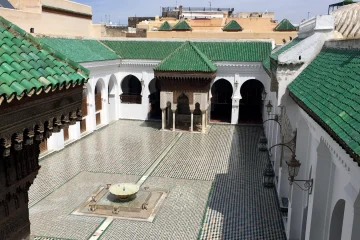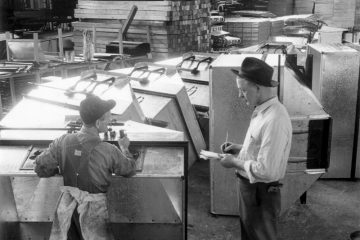Written by Ghoul-brielle S. Bates
Pumpkin lattes are steaming, sweaters are being dusted off, the leaves are changing colors and the temperatures have begun to drop (except in California). Now that it’s Fall, some of us are preparing for Halloween celebrations. In case you need a little inspiration, let’s take a look at a couple of Halloween classics.
Zombie apocalypse films began with the 1968 cult classic Night of the Living Dead, created by filmmaker/writer George A. Romero. The film follows seven people trapped on a rural farm, battling the undead. Romero completed the movie for $100,000 and it went on to gross $30 million worldwide. This film spawned a franchise of reboots, sequels, and prequels while influencing every other zombie motion picture.
In hopes of inspiring future filmmakers, a hundred boxes of George A. Romero’s career artifacts were donated to the University of Pittsburgh. The Romero Collection contains scripts, production notes, correspondences, promotional materials, and props. The University of Pittsburgh intends to expand its Archive and Special Collections hoping to make it an international resource for those studying horror and science fiction.
Romero and crew are filming scenes from Night of The Living Dead.
George A. Romero helped build a film industry in Pittsburgh, filming thirteen films there. It is because of this that the mayor declared October 1st, George A. Romero Day. To further honor his memory, his family created the George A. Romero Foundation (GARF). Its mission is to preserve and restore Romero’s older works, raise scholarship funds for film students, and create a Horror Studies Center to carry on Romero’s legacy.
Photo of the Salem Witch Museum
The Salem Witch Museum holds exhibits featuring witch hunts and illuminates the history of scapegoating. In 1692, a wave of paranoia swept through Salem, Massachusetts. Stoked by religious fervor, afflicted children accused several women of bewitching them. There is speculation as to what caused these afflictions; moldy bread. The majority of these women were considered outcasts because they did not attend church regularly, and were unmarried or older. Women’s souls were believed to be more vulnerable to the Devil.
If you are interested in some of the artifacts, you can explore them without the cost of airfare. The University of Virginia has collected original court documents from the trials. This rich collection is an enhancement to the witch trials. It contains diaries, sermons, transcripts, maps, and depositions of the accused women. It is a testament to the power of fear during a dark time in history.
If you have decided to stay in for the night Wichita University has compiled a Women in Horror Guide. On it, you’ll find a variety of books (from YA to History), films, and tv series to entertain you.
Happy Halloween!



0 Comments